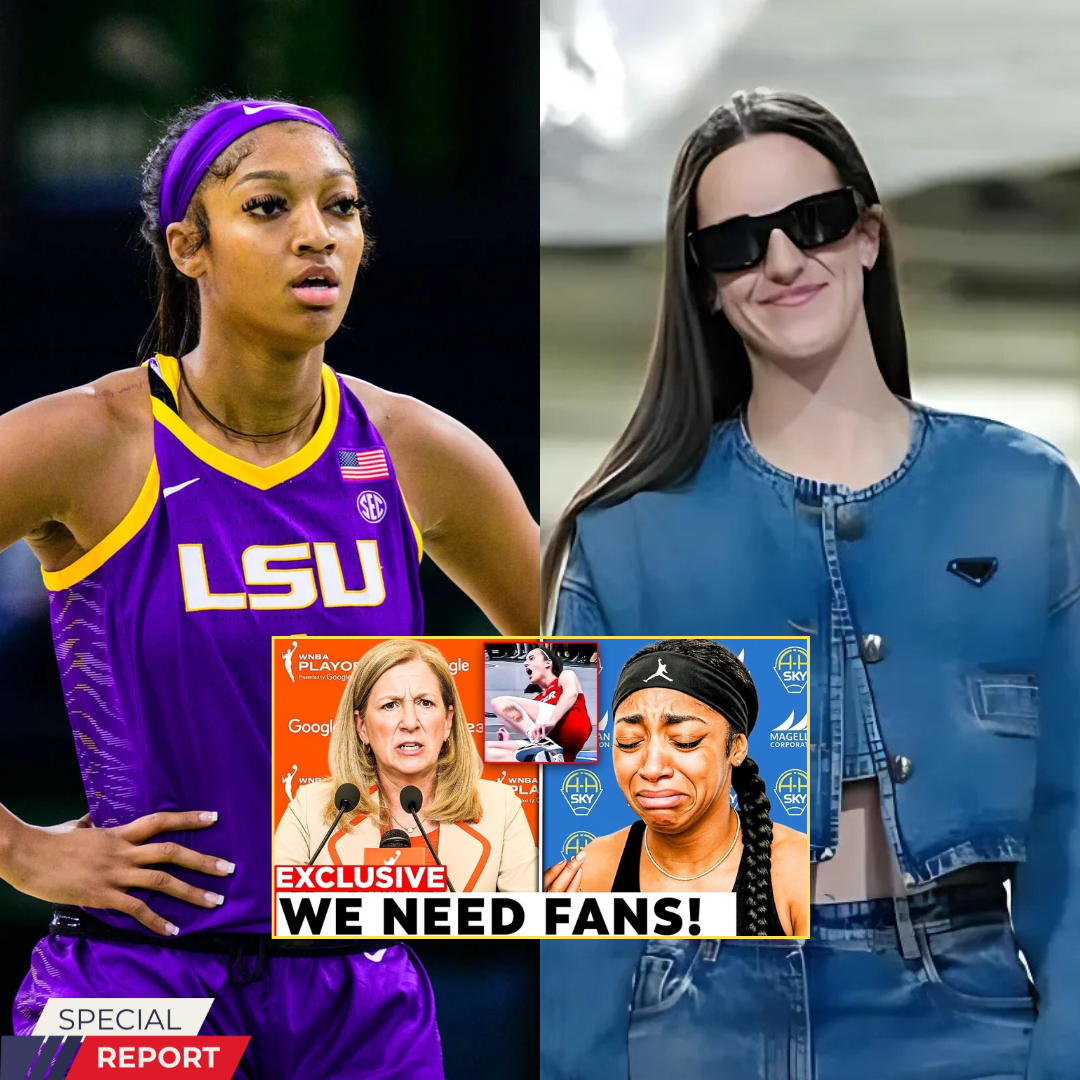
No one — and I mean no one — is paying to watch Angel Reese try to play basketball. Hell, not even Mama Ree is paying to watch that lack of skill. The numbers don’t lie, and they paint a picture the WNBA simply cannot afford to ignore.
When Caitlyn Clark suffered a left quad strain on May 25, 2025, the economic shockwaves were immediate and devastating across the league. Clark is set to miss at least two weeks, and the contrast between her magnetic draw and the rest of the league has become glaringly obvious. Players like Angel Reese and the struggling Chicago Sky now face an uncomfortable reality about star power in professional women’s basketball: Clark is the only real star driving attention and revenue.
You can’t tell me the “Caitlyn Clark effect” isn’t real. When the news broke that Clark would be out for weeks, ticket prices tanked — but I never expected them to plunge 71% for a rivalry game.
The WNBA’s carefully built economic momentum crashed like a house of cards overnight. Indiana Fever ticket prices dropped 42%, from an average of $137 down to just $80. This wasn’t a slow decline or a market correction; this was fans saying loud and clear, without Clark, the product isn’t worth the price.
Meanwhile, the Chicago Sky — who moved their June 7 matchup against the Fever from the 10,387-seat Wintrust Arena to the much larger 21,000-seat United Center to accommodate expected Clark crowds — saw their ticket prices crater. The get-in price plunged from $86 down to $25 as news of Clark’s absence spread. For a team that took a big gamble by moving to a massive venue, the financial blow was brutal.
The Sky can’t even sell out their smaller arena — let alone the United Center — and now without Clark, attendance and interest are evaporating fast. Their current 0-4 record doesn’t help, either.
Here’s the bitter truth: while players like Angel Reese have some name recognition, the WNBA’s economic engine is overwhelmingly fueled by Clark. According to Fox Sports, games featuring Clark and the Fever averaged 1.178 million viewers during the regular season — nearly three times the average WNBA viewership of 394,000.
That’s not just a slight edge; that’s a transformation of the league’s television appeal.
The May 17, 2025 matchup between the Fever and Sky, featuring Clark, drew a record-breaking 2.7 million viewers — the highest NBA regular-season audience in 25 years. The broadcast peaked at 3.1 million viewers. That one game outperformed some entire playoff series from past seasons.
Out of 24 WNBA broadcasts with over 1 million viewers in 2024, 21 featured Caitlyn Clark. Nearly 90% of the league’s most successful TV events hinged on one player’s presence.
At the arena level, three games with 20,000+ fans in attendance all involved the Fever — further cementing Clark’s role as the league’s biggest draw.
When Clark goes on the road, ticket sales jump by 140% on average, with prices soaring to an average of $312. That’s insane for women’s basketball. But take Clark out, and the whole thing collapses.
Angel Reese and the Chicago Sky now face a tough challenge: maintain relevance and excitement without their biggest rival on the court. But the Sky’s struggles — a winless start and fading media attention — tell a grim story.
Even at their regular Wintrust Arena games, ticket prices are down to $170 for some matchups, reflecting the market’s cold assessment of their drawing power.
Economically, Clark was responsible for 26.5% of all WNBA economic activity during her rookie season. Projections for 2025 suggested she could generate $875 million — possibly hitting $1 billion — when factoring in attendance, merchandise, TV revenue, and broader economic impact in Fever cities.

This isn’t guesswork; these are hard numbers backed by ticket sales, merchandise spikes, and broadcast ratings.
Clark’s injury has exposed a fragile truth: the league’s success is overly dependent on one player. When ticket prices fell 42% within hours of her injury news, it wasn’t just a dip — it was a clear signal that the WNBA’s economic foundation is precariously built around Clark’s star power.
Merchandise sales have soared by over 500% leaguewide, largely due to Clark. Dick’s Sporting Goods saw a 233% jump in WNBA sales from 2023 to 2024, directly linked to her popularity.
But this concentration of star power is a double-edged sword. The WNBA’s newfound success is spectacular — but it’s not broad-based yet. If Clark faces a serious injury or leaves the league, the entire system risks collapse.
Clark is still early in her career, and this is her first major injury. The league must confront whether relying so heavily on one player is sustainable. Other teams and stars need to step up, develop their own narratives, and attract fans.
Angel Reese and the Chicago Sky have to stop depending on the “Clark rivalry” hype. They need to build winning chemistry, deliver compelling basketball, and create stories that hold fan interest — without leaning on Clark’s presence.
Right now, removing Clark from the equation reveals a harsh truth: the WNBA product outside of her is struggling for attention. Race and social narratives can only do so much when the on-court product isn’t captivating.
If the league wants to grow, it needs to diversify its star power — fast. Otherwise, when Clark is sidelined or leaves, the WNBA’s fragile bubble could burst.







